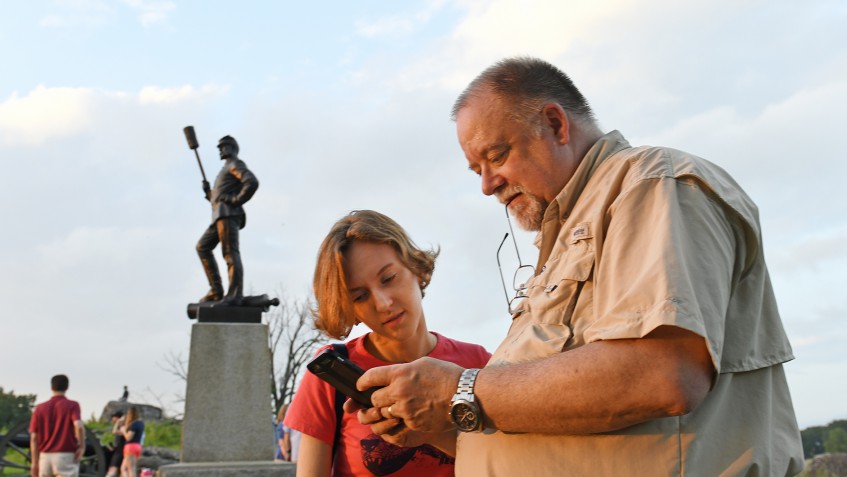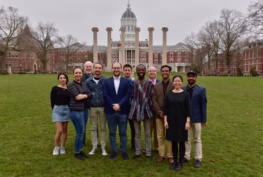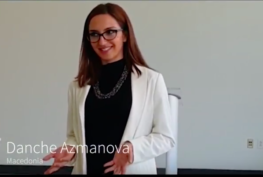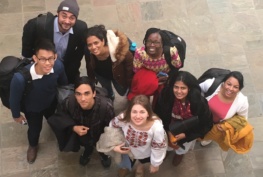A three hour drive from Pittsburgh to Gettysburg is what Americans call a scenic route.
Farmlands and neat brick houses, stars adorning sheds and barns in Amish villages and curvy mountain roads made this trip through rural Pennsylvania quite an adventure.
Suddenly, I noticed a couple of statues hiding in the shadows of trees. “Now you’ll see the battlefield — we’ve arrived in Gettysburg,” my colleague told me as I was trying to spot more monuments.
The initial plan for us in Gettysburg was to participate in a three-day multimedia workshop organized by Penn State University professors. Some of the trainers turned out to be former Pittsburgh Post-Gazette staffers, so I was lucky to learn more about the paper where I’m working.
But before the training, my colleague and I decided that we should spend a day touring the Gettysburg National Military Park. It was a deep dive into American Civil War history.
 Our guide was a true history nerd. He walked us through the three days of action and continually pointed out key places and people involved during that critical battle.
Our guide was a true history nerd. He walked us through the three days of action and continually pointed out key places and people involved during that critical battle.
He told us he wanted to be a tour guide since his childhood. However, to become one is not easy. The candidate needs to pass a three-hour writing test followed by an oral tour to already qualified guides. “So you won’t be able to make up things — you really should know them,” he told us. I think it’s easier when you are truly passionate about your job.
We experienced the battlefield from the same vantage point as the men who fought there for three days in July 1863. The guide was driving us through the woods and fields, and offering occasional stops so we could see and understand what was going on there over a century and a half ago. While you’re there on the ground, aspects such as tactics and the battle plan became easier to understand because you can see the territory and estimate the distances yourself.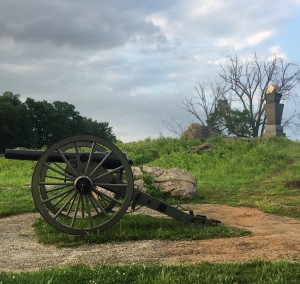
It was impressive. I never thought the battlefield would be so immense.
As you stop and listen for a second you could almost hear those voices from the past, along with the same howling of the wind and crickets’ chirping.
When you take a closer look at all those famous places and get to know more about people who shaped the battle, you start to understand when and why the Battle of Gettysburg turned the tide of the Civil War in the Union’s favor.
We also saw the place where the President Abraham Lincoln delivered his famous Gettysburg Address five months after the bloodiest battle of the Civil War was over.
I had little idea the speech was planned as “a few appropriate remarks.” That was the instruction Lincoln received from the man who invited him: David Wills of the committee for the November 19 Consecration of the National Cemetery. The main oration was delivered by U.S. Secretary of State Edward Everett. But his two-hour speech was shadowed by Lincoln’s two-minute address — 272 words now featured in history books.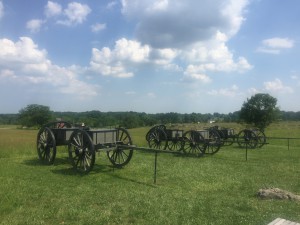
Still, the battlefield is a heartbeat of the town. It attracts thousands of visitors every year.
For locals, the battlefield is a blessing and a curse. The place gets overcrowded starting early summer and stays busy at least through November, particularly on the Remembrance and Dedication Day in November, on the anniversary of the Gettysburg Address.
“Then you can always see lots of Abraham Lincolns walking all over the place,” Katie Bigham, a 16-year-old native of Gettysburg, told us. Katie was a hero of the video project that we were tasked to do as a part of our workshop.
She admitted that local children have been bored with the endless field trips to the battlefield, that it just became a routine. But Katie knows a lot about the battle and its outcome.
“We had so much American history at school, so I was surprised to know there were other civil wars and revolutions in the world apart from ours, like French Revolution,” she told us.
It strikes me that lots of national history is good, but it’s always better to put things in the context. Learning complex world history and geography always adds to understanding cause and effect relationships that are shaping every sphere of life – from religion to business and politics – everywhere in the world.
Katie said she loves history and wants to travel the world to gather people’s advice. For now she’s gathering eggs from her chickens, which live in a neat coop at her home, and working at the Gettysburg gift shop. But one day she’ll pursue her big dream: to study in Italy.
We documented her story in this video production. (https://vimeo.com/169452680)
When it was time to leave Gettysburg, Katie gave us her (first ever) business cards and told me she would be happy to visit Ukraine one day, even though she doesn’t know much about my country. If it happens, I’ll make sure Ukraine history lessons for Katie will be the most exciting she’ll get outside of Gettysburg.

